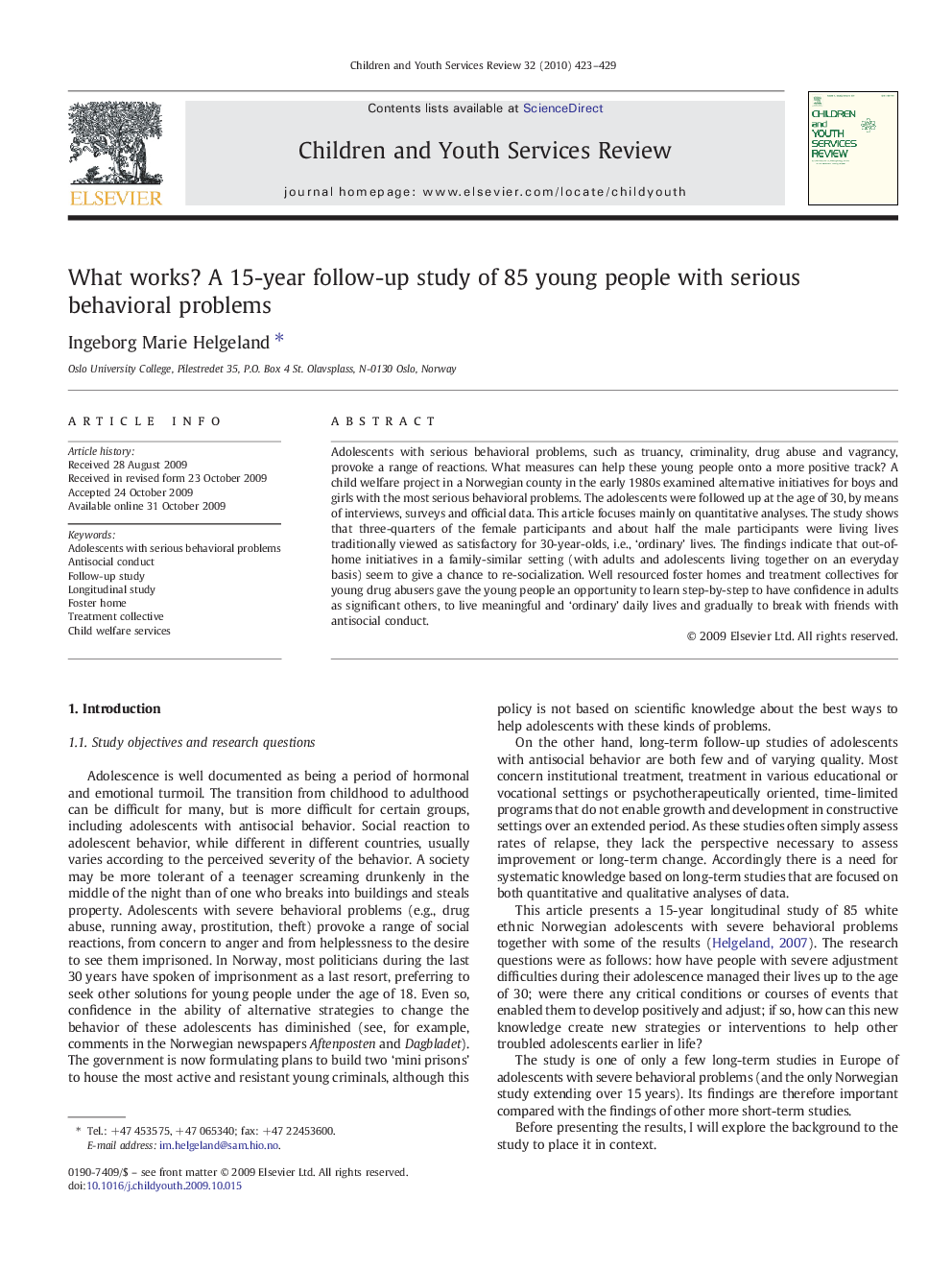| Article ID | Journal | Published Year | Pages | File Type |
|---|---|---|---|---|
| 347538 | Children and Youth Services Review | 2010 | 7 Pages |
Adolescents with serious behavioral problems, such as truancy, criminality, drug abuse and vagrancy, provoke a range of reactions. What measures can help these young people onto a more positive track? A child welfare project in a Norwegian county in the early 1980s examined alternative initiatives for boys and girls with the most serious behavioral problems. The adolescents were followed up at the age of 30, by means of interviews, surveys and official data. This article focuses mainly on quantitative analyses. The study shows that three-quarters of the female participants and about half the male participants were living lives traditionally viewed as satisfactory for 30-year-olds, i.e., ‘ordinary’ lives. The findings indicate that out-of-home initiatives in a family-similar setting (with adults and adolescents living together on an everyday basis) seem to give a chance to re-socialization. Well resourced foster homes and treatment collectives for young drug abusers gave the young people an opportunity to learn step-by-step to have confidence in adults as significant others, to live meaningful and ‘ordinary’ daily lives and gradually to break with friends with antisocial conduct.
